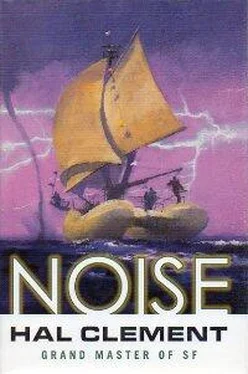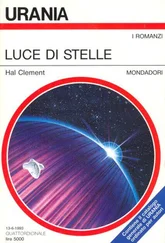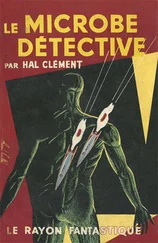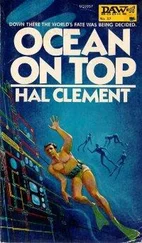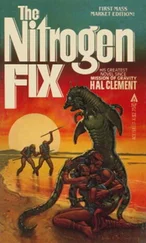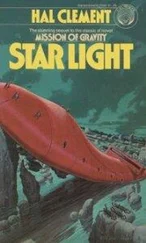No one worried about ’Ao, therefore, for the next twelve hours or so. Mike spent some of them answering questions from the city’s teachers, and most of the rest eating and sleeping. He assumed that Wanaka and Keo had honored the request to test the food-exchange possibilities, but saw nothing of them. He had long ago, in Muamoku, gotten used to being an object of curiosity and even astonishment, especially when not wearing his noise armor, and was more amused than bothered at the renewal of this experience in Aorangi.
After sleeping he asked to be shown the city, and could hardly fault the fact that he was accompanied the whole time. He wondered a little how that might affect Wanaka, who would probably suspect she was being steered, but she and Keo weren’t with him to be asked. Not that it would have been convenient to ask, of course.
He did think of that possibility in his own case, but dismissed it quickly for the usual excellent—to him—reasons.
He and his guides met ’Ao and Eru during the day, however, and the girl greeted him enthusiastically.
“Mike! Remember how you were wondering about where they could get their energy so far south? Eru showed me! You have to come and see! And the whole city is so funny!”
There was no visible reluctance on the part of Mike’s guides, two male teachers who appeared to be somewhere in the hundred-year age range. Hoani knew these could never by themselves have enforced a travel prohibition on him; but the area was fairly crowded, they could have called for unlimited help, and becoming a fugitive in an unknown pattern of tunnels seemed very poor tactics for anyone as conspicuous as he was. He put the brief thought out of his mind; Wanaka’s commercial paranoia, or common sense, or whatever it was, must be getting to him, he suspected.
They walked for nearly an hour, often downward, before the tunnel maze opened into a huge chamber in the coral-reinforced ice. This contained a vaguely mushroom-shaped object near its center that to Mike’s surprise proved to be a model of the city. Numerous people, mostly elderly, crowded around it adding, removing, and shifting tiny icons, while talking rapidly to each other in what sounded like Maori words but were nearly incomprehensible to him. He guessed he was hearing professional jargon, as meaningless to an outsider as the orders of a football quarterback in a huddle or a landing-orbit controller with traffic in a meteor shower.
The roughly hemispherical top of the mushroom, curved side up, presumably represented the iceberg. A change in color from white above to what Mike considered sky blue below evidently represented sea level; the volume above it was far smaller than that below. It had not been obvious, or at least Mike had not noticed, while they were still afloat that the water near the line had been as shallow as it seemed in the model. Probably wave action near the water’s edge had created that shelf, he thought. Near the water line on the ice side of the boundary a set of eight tiny icons, one of them colored differently from the rest, presumably represented Mata and the fleet.
“Never mind up there!” ’Ao cried. “Look at this up-and-down part. Remember, the scale changes right below the berg. The cylinder’s the important part. Mike, it goes down twenty kilometers, Eru says! Look at the water-sails! They use the currents to take the city where they want!”
“Only in high enough latitudes,” one of Hoani’s guides interjected. “If we get too low, the general current systems are too strong for the random ones to overcome. Near the ice cap the currents are mostly vertical, and spread out at the surface, of course, so we can pick and choose—or at least, good enough pilots can. Right now, we’re in some trouble; we shouldn’t have come so far north.”
“Why did you?” Mike asked. “Something to do with the gold-fish we ran into?”
The other shrugged. “We’ll get an explanation sometime, when they figure out who should, or more likely who shouldn’t, be blamed. It happens every few years. There’s a big file of excuses. Maybe the fish you just mentioned will figure in this one. I hadn’t heard about it”—he looked at his partner, who shrugged—“but there are projects like that going on all the time. The general public doesn’t usually hear about them unless and until they work, and job offers get posted.” Mike nodded understanding, filed a large upward revision of his guess at Aorangi’s population and a superfluous confirmation of their humanity, and turned back to ’Ao and Eru.
“But what does this have to do with the energy?” he asked. “I don’t see any connection between sailing the place and powering it enough to keep the air good, and if they used any sort of leaves, especially ones big enough to be useful this far south, Keo and I should have seen them.”
’Ao didn’t answer at once, though her expression suggested less that she couldn’t than that she was marshaling words. Eru spoke first.
“The deep water is a lot warmer, of course, and we try to keep as closely as we can to freezing temperature around the upper city. I expect that’s part of the trouble now. There are five different power systems I’ve learned about in school so far, but they all depend on hot-water-is-down, cold-water-is-up.”
’Ao started to fill in details, with some help from Mike’s escorts. At some other time, Mike would have been impressed again at her learning speed, but all he could say now was, “I get it. Thanks, ki—young teachers.”
The whole thing seemed straightforward enough. The heat below must be carried into the cylindrical mushroom stem, which presumably was not made of ice, through some sort of exchanger, and vaporize a working fluid that operated turbines or other mechanical devices on the way up. These in turn worked electrical generators, possibly grossly mechanical but more probably solid-state devices or, perhaps even more likely, pseudolife equipment. As long as there was a heat source and a heat sink, the engineering details mattered little. The sink must be ocean water, Mike reflected, not only because it would be far more efficient than air, but because Keo and he could hardly have missed anything dumping a city power plant’s worth of warm-air exhaust during their examination of the surface, sketchy as that had been.
And now, at least, they certainly wouldn’t be using ice to cool their condensers. Not willingly, with their city melting around them.
The teachers were adding detail as he thought, but both were using professional words Mike didn’t understand very well; a modest knowledge of basic physics didn’t make him either a chemist or an engineer. ’Ao finally seemed to realize this and dragged the party off to see the installations she had been talking about. Mike had to concede to himself that it was all interesting, but his mind kept wandering to other matters like when and how can we get out of here and how much can I find out about this “lost civilization” before we do? Did their ship get here first, or last, or about the same time as the other colonists? I can see what kept them out of touch with the others, at least at first, of course.
Shades of Rider Haggard!
Hoani was, after all, a historian. But could he change or expand his thesis subject now? To put it mildly, his advising committee was not readily available for discussion.
Actually seeing the power devices, which were a little lower in the iceberg, was only marginally interesting, since their internal workings weren’t visible and would probably not be comprehensible to him if they were. Also, Hoani’s own thoughts were becoming more and more distracting. He finally, as politely as he could, pleaded fatigue, and requested guidance to his own quarters. The plea had some validity; the coral spicules they had noticed from the outside were smaller and closer together in the city, but a large fraction of any given tunnel floor was still ice. The low gravity allowed him to recover in time from each slip, but learning to walk in Aorangi was more complicated than in Muamoku. There it had been merely the gravity and the need for slow-response sea legs.
Читать дальше
